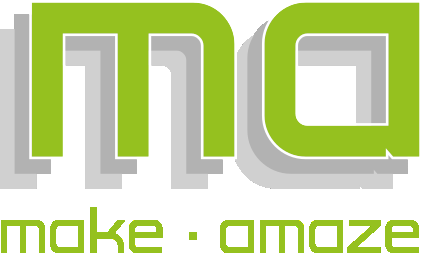What is Quality in AM design?
One aspect of Quality in DfAM is the value it adds. Just because AM allows ‘design freedom’ doesn’t mean any design is ok! And in fact with AM, not designing things right can get expensive very quickly. In addition, AM has some real weaknesses when challenging conventional manufacturing, e.g. Injection Moulding (IM). The texture, the sheen, the colour, the materials, the perfection of conventionally manufactured objects, the consistency of form and of material structure across all feature sizes. These are things that AM can’t beat. A design for AM needs to add value to make sense. Then it can compete with conventional manufacturing processes and even be better.
So by a design that incorporates ‘value’ we mean one that makes things better than they were before that design existed. In the majority of cases that means something that is designed to the strengths of AM and away from its weaknesses, that encompasses a benefit and that is designed to be manufactured with the lowest ‘cost’. ‘Cost’ includes manufacturing risk and manufacturing time as well as overall piece price.
By ‘manufacture’ we mean everything that needs to be done to that part to give it to a user, and that is not just ‘printing’ it. A quality part design should leave your workstation and go to the shop floor with all the accompanying information for people who will receive and manufacture your design, from build preparation, support placement, post-processing, inspection.
The data for the downstream process steps will comprise:
-
A model of the net shape part (usually a CAD model).
-
Depending on the company processes this could be the native CAD model but is usually a file format that the slicer can process. Some slicers process STEP files but most need a tessellated file. STL is a legacy file format that is prone to errors and doesn’t carry metadata. So we would recommend (provided downstream process steps accept it) that you use 3MF since it can carry additional information about supports, build file orientation , lattices etc.
-
-
Accompanying information that build preparation and manufacturing need. This will include:
-
Build setup variables
-
Post-processing and inspection requirements (described in the SkillsMove nuggets) as per conventional manufacturing Product Modelling Information (PMI)
-
So if you put those things together, a Quality design is the right application, with the right choice of process and the right material, the right geometry and the right instructions to people downstream in the process chain, such that the experience for everyone involved is seamless. That seamlessness is dependant on the choices embedded in the design by the designer. Such a design will be adding value, and minimizing the downside / risks of AM.
In the case of prototyping, where the aim is just get fast iterations in your hand, to see what the design concepts look like in reality, or when you a further along the design process, to check form, fit and function, then the requirements for a quality design don’t really apply. It’s all about playing in a sandbox, using a printer to help evaluate your ideas and then discarding them and moving on.
It’s worth saying that good AM design isn’t defined by complexity. A simple bracket that replaces a conventionally manufactured one can be a good quality design. It adds value if its function or aesthetic is improved, or it’s opened new markets for the seller of the bracket, or it’s made manufacturing faster or cheaper, less dependant on the supply chain, or has a lower environmental impact, or any combination of the above. If that is coupled with an absence of design-induced manufacturing risk, or difficulty in post-processing & inspection, then we would call that a quality AM design.
So in summary, a quality AM design:
-
Adds value through use of AM instead of conventional manufacturing
-
Minimises manufacturing cost and risk along the whole AM process chain i.e. print file preparation, printing, post-processing and inspection
-
Is a file of the part geometry accompanied by complete and unambiguous information that the downstream process steps will need

